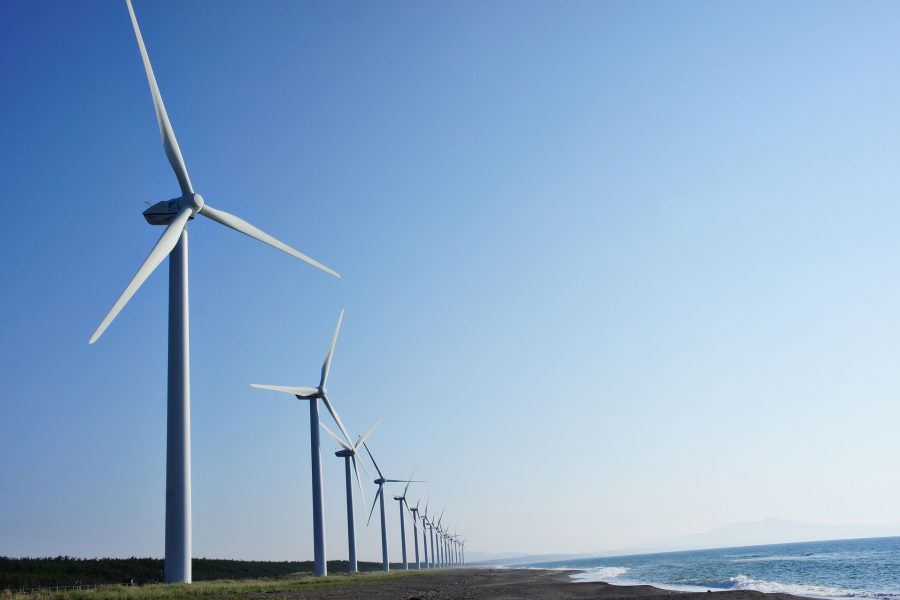Is there anything that can stop or even slow the runaway train of green energy in California? Maybe there’s a break coming in the fairly near future and it probably won’t be the one most people are expecting.
The California Energy Commission last week “adopted a report establishing offshore wind goals and moving the state one step closer to development of the clean energy resource off California’s coast.” The Commission said the report’s preliminary findings “set planning goals of 2,000-5,000 megawatts (MW) of offshore wind by 2030 and 25,000 MW by 2045, enough electricity to power 3.75 million initially and 25 million homes by mid-century.”
Wind currently provides about six gigawatts of power to California. If the goal of 25 GWs (25,000 MWs) of offshore production is to be reached, it will require more than a four-fold increase, meaning we’re looking at a future of enormous forests of steel turbines across the water, because wind doesn’t have the power density of gas, coal, or nuclear. It needs roughly “90-100 times more space than gas” to produce the same amount of electricity, according to Phys.org.
Solar power also eats up a lot of open space, though not as much as wind. Nevertheless, both have been targeted by adversarial forces. In an article about “The NIMBY Threat to Renewable Energy,” the Sierra Club’s magazine noted that “in Vermont, everyone loves clean energy – when it comes from someplace else.” More than a year ago, energy analyst Ronald Stein told PRI that “NIMBYs around the globe, from Germany to Australia, California, New York, and Massachusetts are speaking loudly, and acting, to put a halt to the invasion of noisy wind farms in their backyards. Following numerous reports from Maryland to Canada to France on wind turbine noise, the NIMBYs are becoming energized.”
While there are no homes on the ocean (but many next to it), it’s a bit naive to think offshore wind won’t also bring out the NIMBYs, as well as environmental activists, who will complain because, as Stein has noted, it “may not be in the best interest of ocean life.” Turbine noise and vibration have caused “a number of cetacean fatalities,” he says, and interfere “with whales’ sonar guidance and communication systems.”
Even the blue state Kennedys were opposed to a wind farm off the coast of their compound in Hyannis Port, Massachusetts. They believed it would wreck their “viewshed.” Robert Kennedy Jr. “argued that hundreds of flashing airplane warning lights on the turbines would ‘steal the stars and nighttime view.’”
There’s more: Though the windmills will be located on water, and the power lines needed to move electricity from them to the grid start underwater, at some point they have to go over land. Large battery farms needed to store power will also have to be built, as will onshore collection substations between the source and the transmission lines. There are going to be people who don’t want this infrastructure in their back yards, and activists who don’t want anything built anywhere.
Let’s close with a point that, like renewables’ extensive land use, is rarely ever mentioned in the rush to eliminate fossil fuels. It is this: wind power actually causes warming. According to the Harvard School of Engineering and Applied Sciences, if there were enough large-scale wind farms across the country to meet today’s power demands, they “would warm average surface temperatures over the continental United States by 0.24 degrees Celsius.” This is caused by “wind turbines actively mixing the atmosphere near the ground and aloft while simultaneously extracting from the atmosphere’s motion.”
This makes solar an ostensibly better option, at least for those who buy into the narrative that man is bringing an existential threat on himself by burning fossil fuels for his prosperity and comfort. However, solar carries its own environmental headaches. The truth is, going green is nothing more than swapping one set of problems for another.
Kerry Jackson is a fellow with the Center for California Reform at the Pacific Research Institute.


